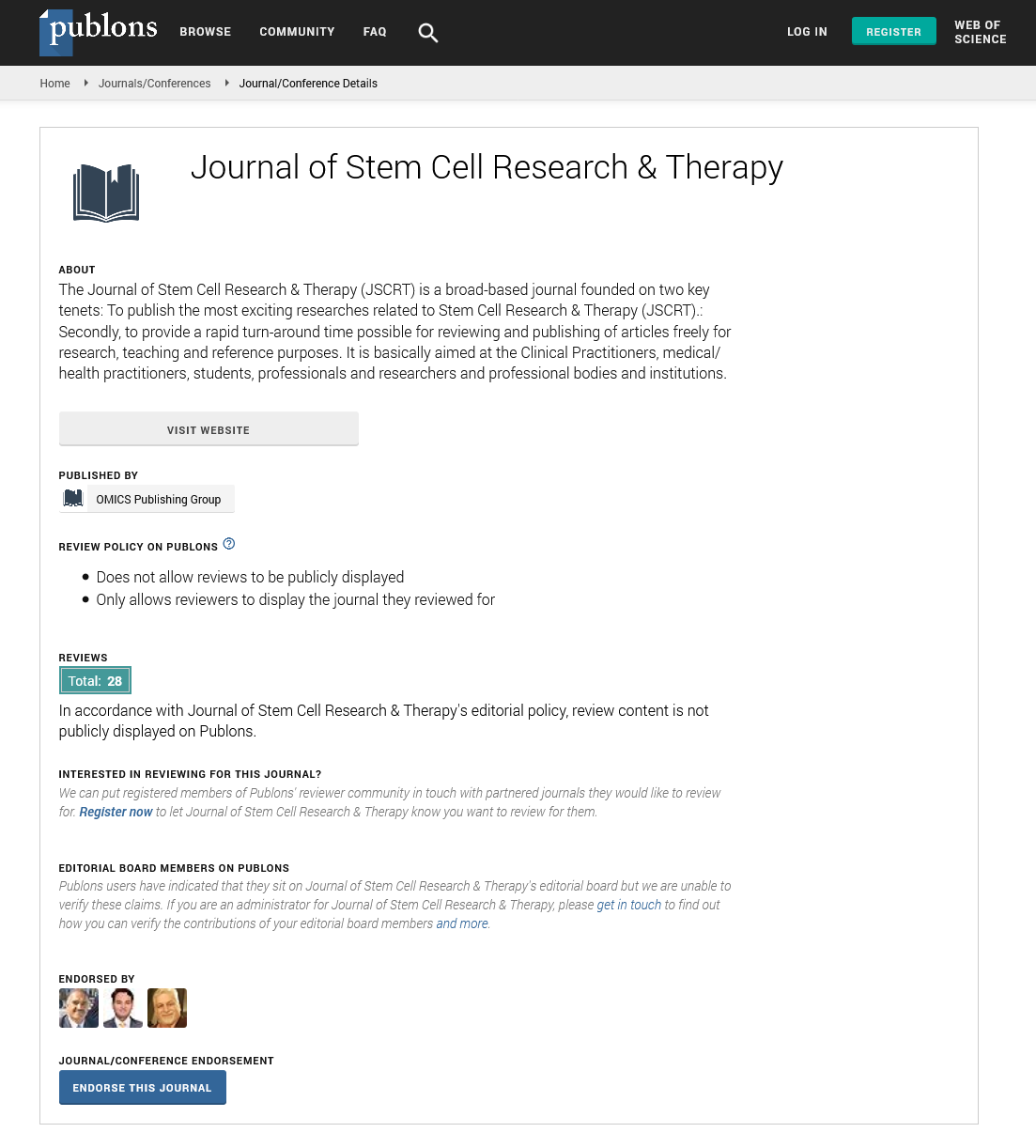Indexed In
- Open J Gate
- Genamics JournalSeek
- Academic Keys
- JournalTOCs
- China National Knowledge Infrastructure (CNKI)
- Ulrich's Periodicals Directory
- RefSeek
- Hamdard University
- EBSCO A-Z
- Directory of Abstract Indexing for Journals
- OCLC- WorldCat
- Publons
- Geneva Foundation for Medical Education and Research
- Euro Pub
- Google Scholar
Useful Links
Share This Page
Journal Flyer

Open Access Journals
- Agri and Aquaculture
- Biochemistry
- Bioinformatics & Systems Biology
- Business & Management
- Chemistry
- Clinical Sciences
- Engineering
- Food & Nutrition
- General Science
- Genetics & Molecular Biology
- Immunology & Microbiology
- Medical Sciences
- Neuroscience & Psychology
- Nursing & Health Care
- Pharmaceutical Sciences
Abstract
Co-culture of Insulin Producing Human EndoC- βH1 Cells with Boundary Cap Neural Crest Stem Cells Protects Partially against Cytokine-induced Cell Death
Anongnad Ngamjariyawat, Svitlana Vasylovska, Kyril Turpaev, Phillippe Ravassard, Nils Welsh, Elena Kozlova and Rikard G Fred
We have recently observed that co-culture of mouse and rat beta-cells with mouse boundary cap neural crest stem cells (bNCSCs) protected against inflammatory cytokine-induced beta-cell death, possibly via direct cadherinmediated cell-to-cell junctions. However, it has not been addressed whether also human beta-cells can be protected via this strategy. If possible it would be an important approach for development of new protocols for improved outcome of islet transplantation to Type-1 diabetes patients. The aim of this investigation was therefore to study the effect of bNCSC co-culture with insulin producing human EndoC-βH1 cells on cytokine-induced cell death. For this purpose GFP-positive bNCSCs were cultured together with GFP-negative human EndoC-βH1 cells in the presence of the cytokines IL-1γ (50 U/ml) and IFN-γ (1000 U/ml). Cells were then stained with propidium iodide and trypsinized for flow cytometry analysis. Analysis of propidium iodide fluorescence in GFP-positive and GFP-negative cells revealed that EndoC-βH1 cells died to a lower extent when co-cultured with bNCSCs than when cultured without bNCSCs. We also observed that EndoC-βH1 cells formed N-cadherin, but not E-cadherin junctions with the bNCSCs. The bNCSC cell population contained a large proportion of beta-tubulin expressing cells indicating neuronal differentiation. A protective function of the N-cadherin junctions was verified by the finding that a neutralizing N-cadherin antibody counteracted the effect of co-culture. We conclude that the interaction between human insulin producing cells and bNCSCs results in a lowered susceptibility of insulin producing cells to pro-inflammatory cytokines in vitro.

